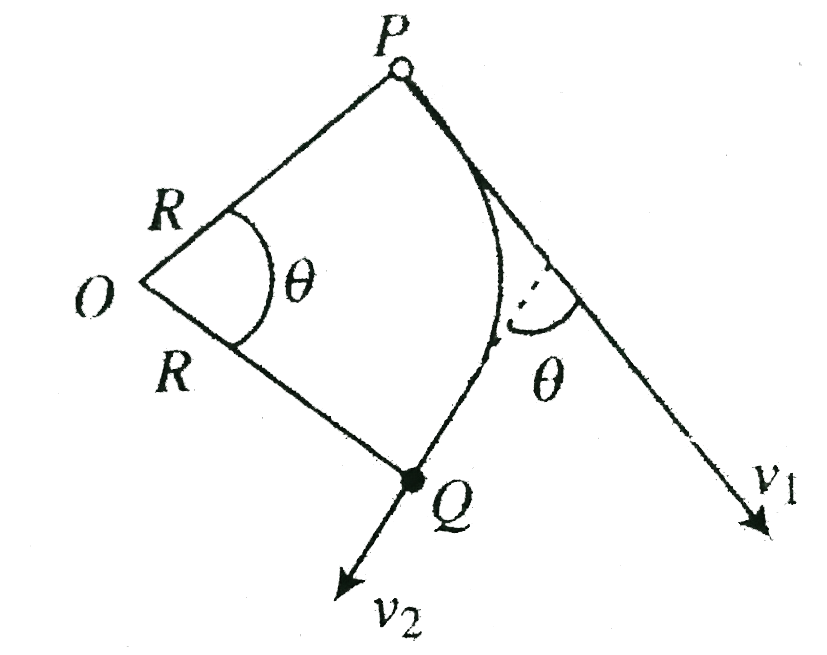A particle describes an angle θ in a circular path with a constant speed v. Find the a charge in the velocity of the particle and b average acceleration of the particle during the motion in the curve (circle).
 .
.
Video Solution
Text Solution
a. As the particle moves from P to Q. The velocty turns through an angle θ. Then,
|Δ→v|=√v21+v22−2v1v2cosθ
=√v2+v2−2∨cosθ=2vsin(θ2)
b. The time of motion is Δt=Rθ/v. Then, average acceleration is |→aav|=→vΔ.
Substituting |Δ→v| and Δ, we have |→aaV|=2vsin(θ2)Rθv=sin(θ2).
|
Topper's Solved these Questions
- KINEMATICS-1BOOK - CENGAGE PHYSICSCHAPTER - KINEMATICS-1EXERCISE - Solved Examples
9 Videos
- KINEMATICS-1BOOK - CENGAGE PHYSICSCHAPTER - KINEMATICS-1EXERCISE - Exercise 4.1
17 Videos
- GRAVITATIONBOOK - CENGAGE PHYSICSCHAPTER - GRAVITATIONEXERCISE - INTEGER_TYPE
1 Videos
- KINEMATICS-2BOOK - CENGAGE PHYSICSCHAPTER - KINEMATICS-2EXERCISE - Exercise Integer
9 Videos
Similar Questions
Knowledge Check
the circular motion of a particle with constant speed is
ASimple harmonic but not periodicBPeriodic and simple harmonicCneither periodic nor simple harmonicDperiodic but not simple harmonicDuring a accelerated motion of a particle
Aaverage velocity of the particle is always less than its final velocityBaverage velociyt of the particle is always greater than its final velocityCaverage velocity of the particle may be zero alsoDaverage velocity of the particle is half its final velocityIf a particle is moving along a circular path with constant speed, then Its motion is
APeriodic and simple harmonicBNon periodicCPeriodic but not simple harmonicDNon periodic but simple harmonic
A particle is moving along a circular path with a constant speed 30m/s. What is change in velociyt of a particle, when it describe and angle of 90∘ at the centre of the circle
View SolutionA particle is moving on a circular path with constant speed v then the change in its velocity after it has desceibed an angle of 60∘ will be
View SolutionA particle is moving on a circular path with constant speed, then its acceleration will be
View SolutionA particle revolves round a circular path with a constant speed the acceleration of the particle is :
View SolutionA particle is moving on a circular path with a constant speed 'v'. Its change of velocity as it moves from A to B is:

View Solution
